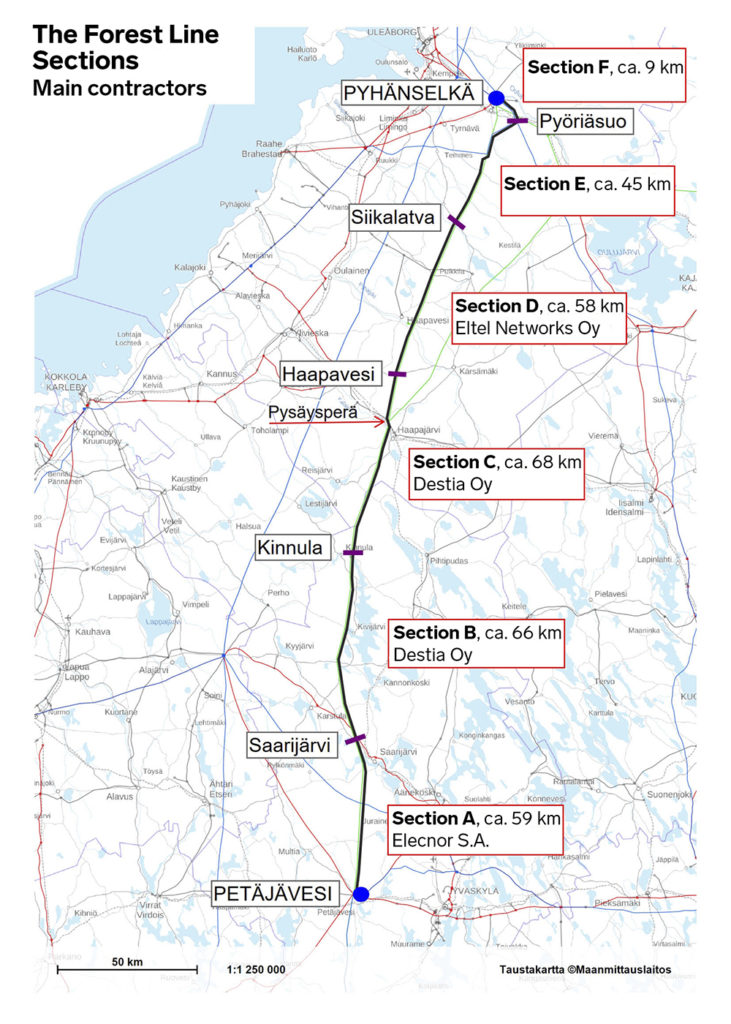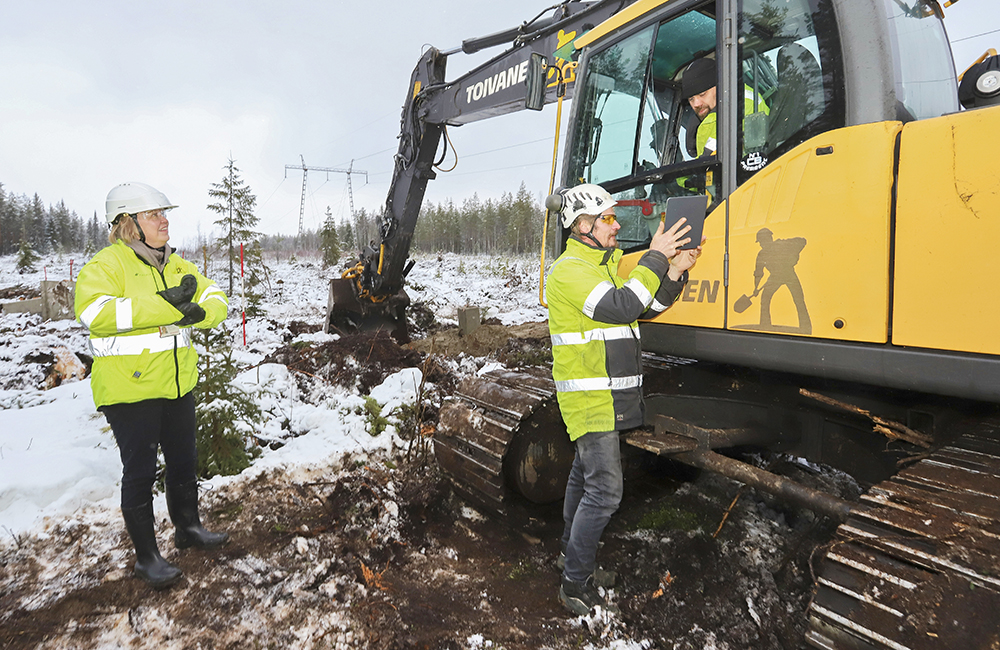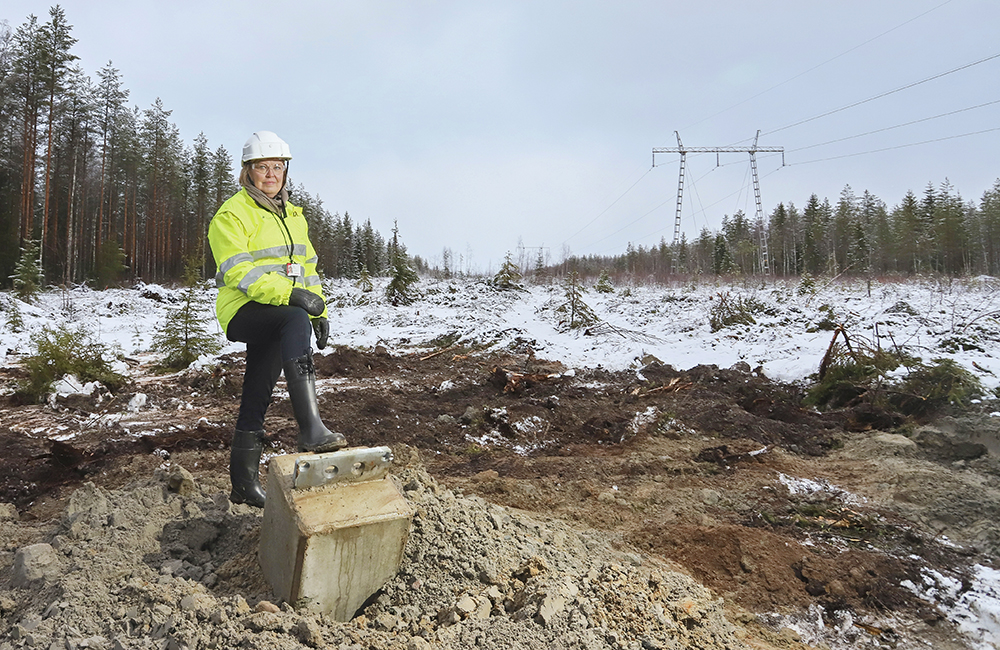The 400-kilovolt transmission line will trace most of its 305-kilometre course through forests, but the route also passes through marshlands, islands and numerous sites of natural significance.
 The Forest Line is necessitated by the change in the origin of the majority of the electricity consumed by Finnish people: in Southern Finland, the amount of condensing power obtained from coal is decreasing. At the same time, a large amount of wind power capacity has been built in Northern and Western Finland.
The Forest Line is necessitated by the change in the origin of the majority of the electricity consumed by Finnish people: in Southern Finland, the amount of condensing power obtained from coal is decreasing. At the same time, a large amount of wind power capacity has been built in Northern and Western Finland.
Maarit Uusitalo, Fingrid’s Manager, Power System Planning, expects both trends to continue. When the new cross-border connection to Sweden over the Tornionjoki River is completed 2025, the Forest Line will be in even higher demand.
“Electricity generation capacity is increasing in the north and decreasing in the south, so there would be a congestion in the transmission capacity if we were not building the Forest Line,” says Uusitalo.
This could lead to a situation in which Finnish people pay different prices for wholesale electricity depending on which part of the country they live in. Uusitalo says that Sweden was divided into four bidding areas precisely because of internal congestions in the power grid.
The Forest Line will also support the utilisation of wind power throughout the country.
“The network vision guiding the construction of the main grid follows the realisation of wind power projects. The next project for approval will be the Lake Line, and the Forest Line will be extended to the south, based on the places where major wind power projects are realised next.”
Responsibility becomes reality on worksites
 Petäjävesi–Saarijärvi 59 kilometres, Antti Linna, Project Manager
Petäjävesi–Saarijärvi 59 kilometres, Antti Linna, Project Manager
“The section of the line between Petäjävesi and Saarijärvi crosses a large island, on which two or three towers will be built. Getting the towers onto the island will be a headache as their total length is 40 metres. They will be transported either by ferry or on an ice road.”
In addition, a live transmission line travels alongside this section. This must be kept in mind at all times because, in some places, the 40-metre towers would make contact with the adjacent transmission line if they were to fall during erection.
“For me, corporate responsibility means working in accordance with jointly agreed rules. The contractor on this stretch of the line is from Spain, and Finland is an unfamiliar country for them. I can play a part in helping the contractor to do a good job by making sure that everyone on the worksite follows the jointly agreed rules.”
Saarijärvi–Siikalatva 192 kilometres
Hannu Kuikka, Project Manager
“This section is a true Forest Line, as it has been necessary to clear a lot of trees. The line crosses a few bodies of water and also a railway. One striking feature is that there are very few settlements near the line.”
During the environmental impact assessment, it became apparent that the Forest Line crosses a marsh classified as a Natura conservation area. One alternative would have been to go around the area, but an old power line corridor already crosses the marsh, so that will be used instead of building a new route.
In its final segment, the Forest Line passes over the branch line to Haapavesi power plant. The branch line shall be temporarily de-energized to allow the construction work of the new line take place on-site, and a backup supply connection must be used. The first plans for this were made before the contract was initiated.
Siikalatva–Pyhänselkä 54 kilometres
Ritva Laine, Project Manager
“Section E contains a lot of marshland. In marshy terrain, the transitions are long, and in some places, work cannot be started until after the long frost cycles have ended. The mild early winter has given rise to some challenges.”
The depth of the Muhos rift valley is not known precisely, but the fault-line in the bedrock is at a depth of about one kilometre. Construction will take place on piling in these areas.
Local conditions will be taken into consideration, including a place where Muhos residents like to swim, so efforts will be made to minimise the disruption to people enjoying the waters. At the start of the procurement chain, the operations of factories are audited systematically. The points scored when factories are re-audited demonstrate that fruitful measures have been taken to improve activities.






